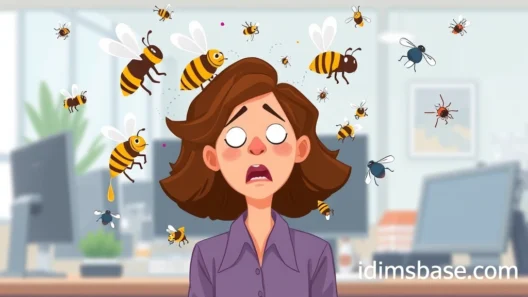Ever found yourself searching for the perfect word to describe something truly wonderful, but "nice" just doesn't quite cut it? We've all been there! "Nice" is a perfectly pleasant word, but sometimes, it feels a little… plain, doesn't it? Like a vanilla ice cream cone when you're craving a rainbow sprinkle explosion!
But fear not, word-wizards and aspiring wordsmiths! Your quest for descriptive brilliance ends here. We're about to embark on a delightful journey through 38 vivid, imaginative metaphors that will elevate your language from "nice" to absolutely sensational. Get ready to sprinkle some magic on your conversations and writing!
Why Metaphors Matter (Beyond Just Being "Nice")
Metaphors are like secret weapons in your communication arsenal. They don't just tell; they show. They paint pictures in the mind, making your descriptions more memorable, impactful, and yes, even more "nice" in a truly profound way. Think of them as shortcuts to understanding, connecting abstract ideas to concrete images. Ready to dive in?
38 Metaphors for "Nice" That Will Make Your Words Sparkle
Let's explore these delightful alternatives, organized for your reading pleasure!
Metaphors Describing Positive Qualities
These metaphors capture the inherent goodness and pleasantness of something.
- A breath of fresh air: This suggests something is invigorating, new, and welcome, like a cool breeze on a hot day.
- A ray of sunshine: Implies warmth, brightness, and cheerfulness, chasing away gloom.
- A warm embrace: Conveys comfort, safety, and a feeling of being cared for.
- A haven of peace: Suggests a place or situation that offers tranquility and refuge.
- A soothing balm: Something that brings comfort, relief, and healing, like a gentle ointment.
- A sweet melody: Describes something harmonious, pleasant to experience, and memorable.
- A gentle breeze: Implies something soft, subtle, and calming.
- A soft whisper: Suggests something delicate, quiet, and comforting.
- A guiding light: Indicates something that provides direction, hope, or clarity.
- A comforting blanket: Conveys warmth, security, and a feeling of being protected.
Metaphors for Excellent Quality or Perfect Fit
When something isn't just "nice" but truly exceptional or perfectly suited.
- A well-oiled machine: Implies efficiency, smooth operation, and excellent performance.
- A finely tuned instrument: Suggests precision, harmony, and high quality.
- A perfect fit: When something aligns flawlessly, like a puzzle piece clicking into place.
- A golden opportunity: Highlights a valuable, rare, and highly desirable chance.
- A diamond in the rough: Something with great potential or inherent value that might not be immediately obvious.
- The cream of the crop: Refers to the very best, top-tier quality.
- A polished gem: Suggests something refined, beautiful, and of high value.
- A masterpiece: Implies something of extraordinary artistry, skill, and beauty.
- A tailor-made solution: Something perfectly designed to meet specific needs.
- Hitting the bullseye: Achieving perfect accuracy or exactly the desired outcome.
Metaphors for Positive Impact or Experience
These metaphors describe how something makes you feel or the positive effect it has.

- A shot in the arm: Something that provides a boost of energy, encouragement, or revitalization.
- A breath of fresh air: (Yes, it's so good, it's on the list twice for slightly different nuances!) Here, it emphasizes the refreshing impact.
- A weight lifted: Describes a feeling of relief and ease after a burden is removed.
- A taste of heaven: Something incredibly delightful and pleasurable.
- Music to my ears: When news or words are exactly what you wanted to hear, bringing joy.
- A beacon of hope: Something that provides encouragement and optimism in difficult times.
- A warm glow: Suggests a feeling of contentment, happiness, and inner peace.
- A comforting hand: Implies support, reassurance, and empathy.
- A smooth ride: Describes an experience that is easy, effortless, and pleasant without obstacles.
- A light at the end of the tunnel: Hope or relief that appears after a difficult period.
Metaphors for Generosity and Kindness
When "nice" refers to someone's character or actions.
- A heart of gold: Describes someone extremely kind, generous, and compassionate.
- A pillar of the community: Someone who is a strong, reliable, and respected asset to their group.
- A true gem: A person who is highly valued, rare, and wonderful.
- An angel in disguise: Someone who unexpectedly brings help, comfort, or kindness.
- A fountain of wisdom: Someone who shares valuable insights and knowledge generously.
- A helping hand: Someone who readily offers assistance and support.
- A shining example: A person whose positive qualities or actions inspire others.
- A breath of fresh air (person): A person who brings positivity, new ideas, and a refreshing presence.
Choosing Your Perfect Metaphor
How do you pick the best metaphor for your situation? It's like choosing the perfect spice for a dish – it depends on the flavor you want to create!
Consider these questions:

- What specific aspect of "nice" do you want to highlight? Is it comfort, quality, impact, or character?
- What emotion do you want to evoke? Joy, relief, admiration, tranquility?
- Who is your audience? Will they understand the imagery you're using?
- What's the overall tone of your communication? Formal, informal, playful, serious?
Here's a quick table to help you visualize different shades of "nice":
| Aspect of "Nice" | Metaphor Examples | Feeling Evoked |
|---|---|---|
| Comfort/Ease | A warm embrace, a soothing balm, a comforting blanket, a smooth ride | Relaxation, security |
| Quality/Excellence | A well-oiled machine, the cream of the crop, a polished gem | Admiration, trust |
| Positive Impact | A shot in the arm, a breath of fresh air, music to my ears | Joy, relief, invigoration |
| Kindness/Character | A heart of gold, an angel in disguise, a helping hand | Warmth, appreciation |
Frequently Asked Questions (FAQ)
You've got questions about metaphors, and we've got answers! Let's dive into some common queries.
Q1: What exactly is a metaphor?
A metaphor is a figure of speech that directly compares two unlike things without using "like" or "as." It states that one thing is another, even though it's not literally true. For example, saying "The world is a stage" is a metaphor because the world isn't literally a stage, but the comparison helps us understand life in a new way.

Q2: How do metaphors differ from similes?
Ah, the classic linguistic duo! The key difference is the use of "like" or "as."
- Metaphor: States one thing is another (e.g., "Her smile was sunshine.")
- Simile: Compares one thing to another using "like" or "as" (e.g., "Her smile was like sunshine.")
Both are powerful tools, but metaphors tend to be more assertive and direct in their comparison.
Q3: Why should I use metaphors in my writing and speaking?
Using metaphors makes your language more vivid, engaging, and memorable. They help you:
- Paint clearer pictures: They connect abstract ideas to concrete images, making complex concepts easier to grasp.
- Evoke stronger emotions: By tapping into familiar experiences, metaphors can create a deeper emotional resonance.
- Make your message more impactful: They add flair and originality, making your words stand out.
- Show, don't just tell: Instead of saying "it was good," you can say "it was a breath of fresh air," which provides more detail and feeling.
Q4: Can I create my own metaphors?
Absolutely! The best metaphors are often original and unexpected. To create one, think about the essence of what you want to describe. Then, brainstorm unrelated objects or concepts that share a similar quality or effect.
- Example: If you want to describe a challenging but rewarding experience, you might think of a mountain climb. "Life's journey is a mountain climb" – there's your metaphor!
Q5: Are there any common pitfalls when using metaphors?
Yes, a few things to watch out for:
- Mixed metaphors: Combining two or more unrelated metaphors in a way that doesn't make sense (e.g., "Let's hit the ground running and nip it in the bud"). This can be confusing!
- Overused metaphors (clichés): While some metaphors become common because they're effective, using too many clichés can make your writing seem unoriginal (e.g., "light at the end of the tunnel" is common, but still effective if used sparingly).
- Unclear metaphors: If your metaphor is too obscure or doesn't resonate with your audience, it won't be effective. Always consider your readers!
Q6: How can I practice using metaphors?
Great question! Practice makes perfect.
- Read widely: Pay attention to how authors use metaphors in books, articles, and poetry.
- Describe everyday objects: Try to describe a simple object (a chair, a cup, a tree) using a metaphor.
- Play word games: Games that involve word associations can help spark your metaphorical thinking.
- Keep a metaphor journal: Jot down interesting metaphors you encounter or ideas for new ones.
Key Takeaways
- "Nice" is a good word, but metaphors add depth, color, and impact to your language.
- Metaphors compare two unlike things directly, creating vivid mental images.
- They help you show, not just tell, making your communication more engaging and memorable.
- There's a metaphor for every shade of "nice," whether you want to convey comfort, quality, positive impact, or kindness.
- Practice using and creating metaphors to truly enhance your expressive abilities.
So, the next time you're tempted to just say "nice," pause for a moment. Think about the specific feeling or quality you want to convey. Then, pick one of these 38 fantastic metaphors and watch your words come alive! Your readers (and listeners!) will thank you. Now go forth and sprinkle that linguistic magic!





